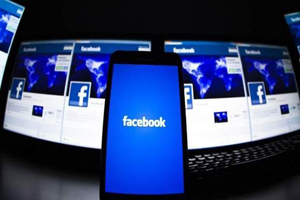Los Angeles, Jun 22: Facebook has introduced new tools in India that will allow users to protect their profile pictures from being downloaded and shared, a move that may help reduce misuse of images on the popular social networking site.
Profile pictures are an important part of building community on Facebook because they help people easily find friends make connections.
However, not everyone feels safe adding a profile picture.
Facebook researchers found that some women choose not to share profile pictures that include their faces anywhere on the internet because they are concerned about what may happen to their images.
The new tools, developed in partnership with safety organisations, including Centre for Social Research and Learning Links Foundation in New Delhi, are designed to give people more control over their experience and help keep them safe online.
"We are piloting new tools that give people in India more control over who can download and share their profile pictures," Aarati Soman, Product Manager at Facebook, said in a blog post.
"In addition, we are exploring ways people can more easily add designs to profile pictures, which our research has shown helpful in deterring misuse," Soman said.
"Based on what we learn from our experience in India, we hope to expand to other countries soon," she said.
Users in India will start seeing a step-by-step guide to add an optional profile picture guard.
When this guard is added, users will no longer be able to download, share or send the profile picture in a message on Facebook.
Facebook users who are not your friends will not be able to tag anyone, including themselves, in your profile picture, Soman said.
"Where possible, we'll prevent others from taking a screenshot of your profile picture on Facebook, which is currently available only on Android devices," she said.
A blue border and shield will appear around profile pictures as a visual cue of protection.
Based on preliminary tests, researchers found that when an extra design layer is added to profile pictures, other users are 75 per cent less likely to copy that picture.
"We partnered with Jessica Singh, an illustrator who took inspiration from traditional Indian textile designs such as bandhani and kantha, to create designs for people to add to their profile picture," Soman said.
"If someone suspects that a picture marked with one of these designs is being misused, they can report it to Facebook and we will use the design to help determine whether it should be removed from our community," she added.





Comments
Add new comment